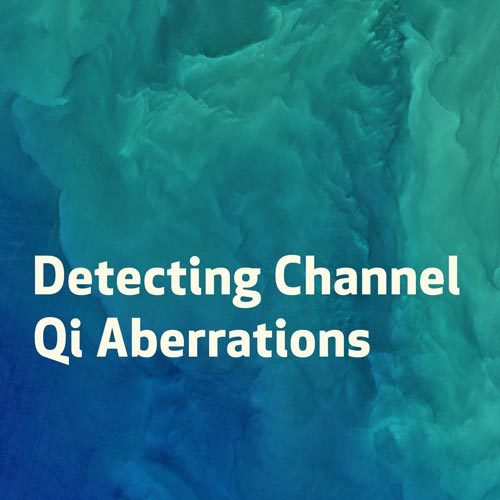Winterize The Kidney Channel!
Is the Kidney channel is running unobstructed and free? As your patients put in their orders for snow tires and cinnamon sticks, you can optimize the flow in their Kidney channels.
Obstructions of the Kidney channel Qi can occur suddenly or can build up over time. Causative culprits can include leg bones broken years earlier, history of hernia, appendectomy scars, C-section scars, old knee or ankle injuries, or injuries or surgeries in the low back area.
Channel-blocking or channel-altering events can also be initiated by almost any of the classic “external evils.” For example, External Evil Wind (infection)in the kidney or bladder can create hidden, long-standing Channel Qi irregularities in the Kidney channel.
To see if the Kidney channel is running smoothly, simply use your hand to detect where the Kidney Channel Qi is going. If it is blocked, diverting into another channel’s path, or running in any manner other than the right one, correct it.
The quickest, most lasting way to help the Channel Qi “go through” (run in its correct path), is using acupuncture needles to recreate the correct path of the channel Qi at the exact site of the diversion. The needles create a “path of least resistance” that runs over or through the area where the Channel Qi is running amok. When needled correctly, the errant Channel Qi will follow the needles and cease using the diversion created by injury or pathogen. Once the Channel Qi has been returned to its correct path, it tends to stay there until a new, dire, disruption event.
The flow of Channel Qi can be felt by hand. Most students need about sixteen hours of practice to start feeling the signals given off by the flow of the Channel Qi. The channels that flow close to the surface, such as the Ren, Du, and Stomach channels, are the easiest to feel, for the beginner. Feeling the flow of the deep-flowing Kidney Channel Qi is a bit trickier.
As noted in the classics, the “Liver channel crosses over the Spleen channel. The Kidney channel is closest to the bones.” By using your hands to differentiate the frequencies given off by the various channels, you can feel the actual behaviour of the channels, in sickness and in health. You can prove to yourself that “Liver crosses over the Spleen actually means “The Liver channel runs closest to the surface. Its width is the entire medial surface of the leg. The Spleen channel runs a bit deeper, at the depth of the most superficial muscle fascia. Its width is the entire medial side of the leg at the muscle level.”Which is to say, “The Liver channel flows over the Spleen channel.” The Kidney channel Qi runs the deepest, the most interior, as it flows beneath the Spleen channel: “closest to the bones.
”Since the Kidney Channel Qi flows at depth, how can one determine if it is blocked or running incorrectly?
Each of the three Yin leg channels gives off a very different signal. The Liver Channel Qi produces a high-frequency tingling. The Spleen Channel Qi feels “stodgy.” The Kidney Channel Qi gives off a slow, steady, very “deep” frequency.
Learn to differentiate between the three by feeling the Channel Qi on the feet. These currents do not overlap on the feet. On the feet, they are each close to the surface and easy to feel. Once you learn to differentiate between the frequencies of the three Yin Leg channels on the feet, you can examine the patient all along the length of the Yin Leg channels and detect any Channel aberrations (“No go through”).
If you find indications of Channel Qi blockage or one channel’s Qi“attacking” another (flowing into the path of a nearby Channel), you can create the most elegant acupuncture treatment: one that will directly correct irregularities by using needles to reroute the flow of Channel Qi.
Best of all, you will be able to feel, by hand, if your treatment worked.
Winter is coming. Make sure your patients’ Kidney channels are unimpeded!
Other Courses By This Teacher

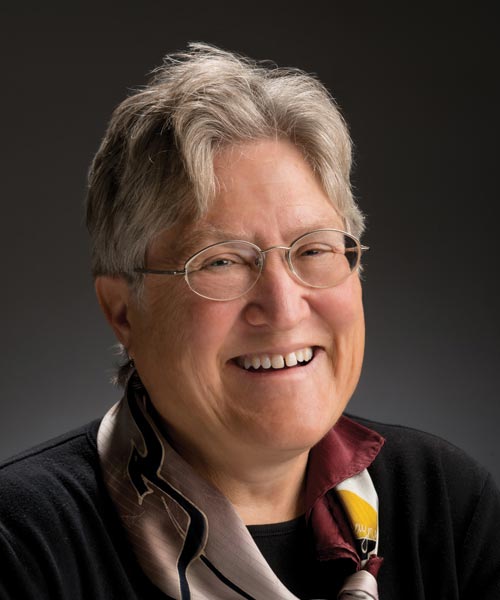
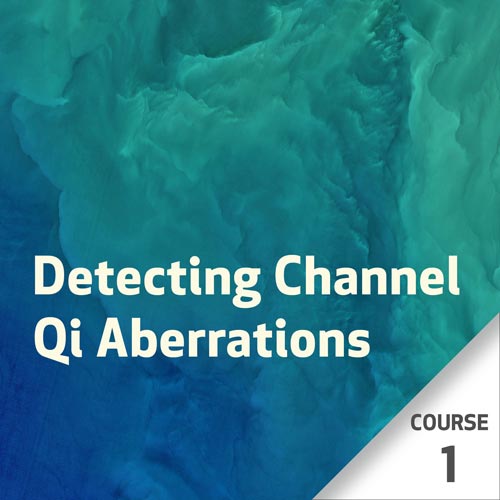

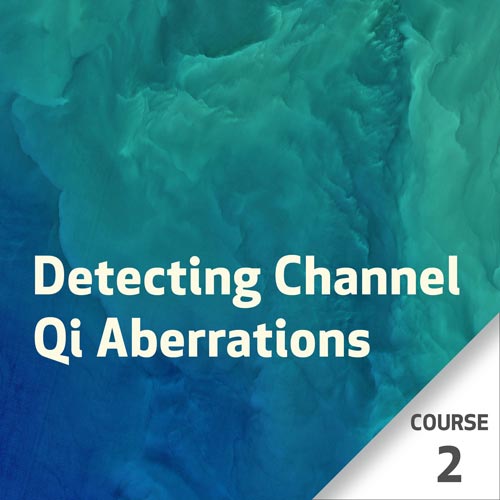





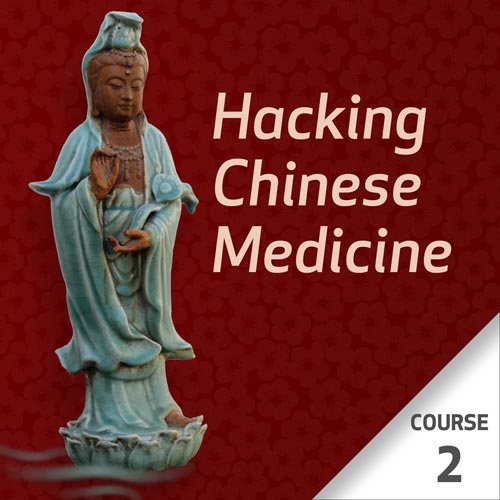



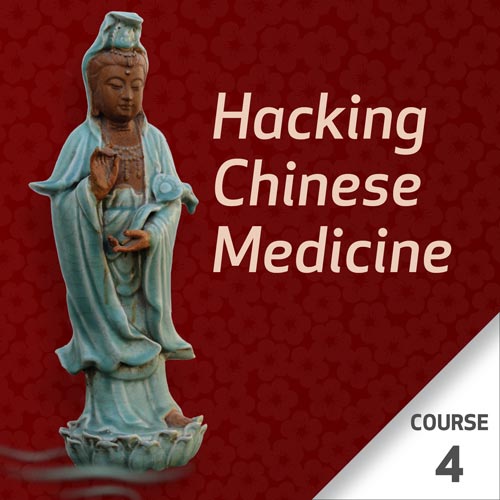

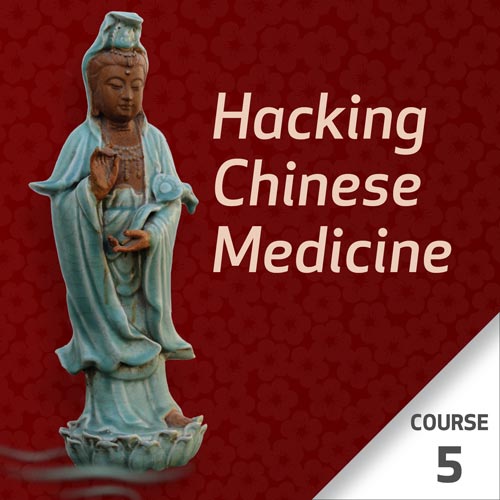



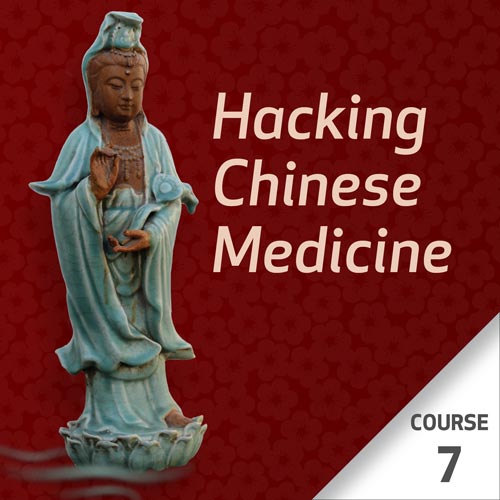



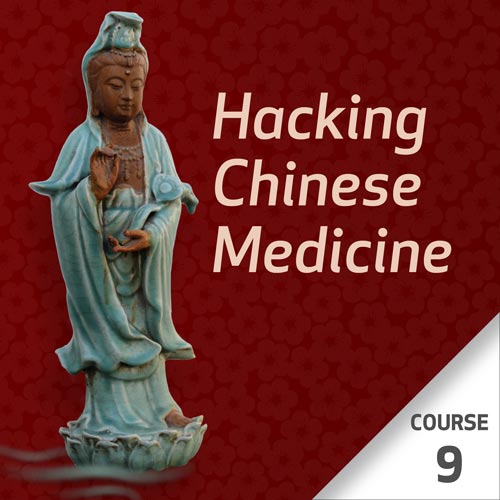

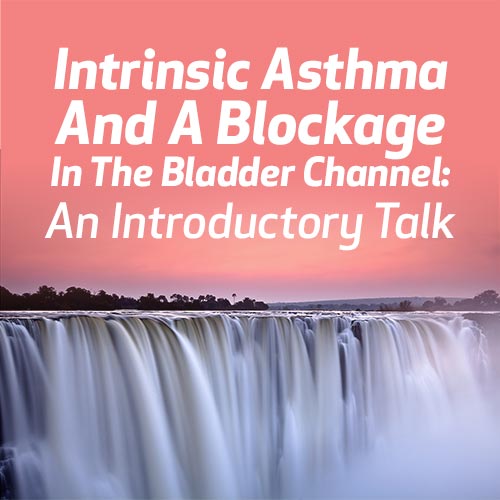

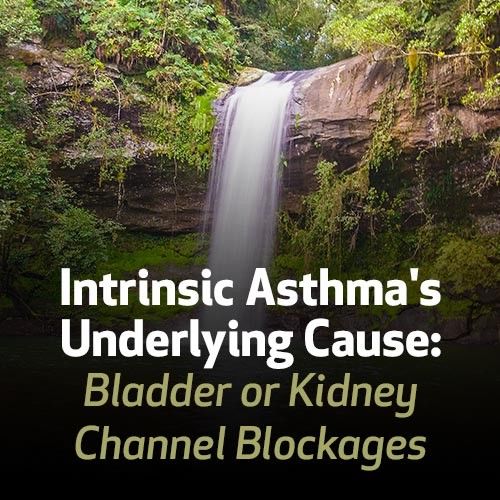

Overview
Don't guess! Don't needle locations that "might" be helpful. Know where the channel Qi is blocked or running amok, and correct it directly! Direct perception of the Channel Qi is one of the most accurate methods of determining the exact location of underlying disharmony, and makes obvious the exact location for needling in order to treat an individual's disease or pain. When you can feel channel Qi directly, you realize the literal meaning of "One channel attacking another," or "The channel diverges," and "Go through, no pain." Learn why in this class. This class will also explain how a cure for an "incurable" illness, Parkinson's disease, was discovered: via detecting a particular pattern of Rebellious channel Qi and realizing that this channel aberration is normal during shock or near-death trauma. Only by knowing where the channel has gone awry can one efficiently, elegantly, be certain of bringing the channel Qi flow back to "harmony," restoring health.
Learning Objectives
- Recognize references to Channel Qi diagnositics in the Nei Jing
- Learn to use direct perception of channels as a diagnostic tool
- Learn the healthy Channel Qi variations in various neurological modes
- Technique: describing a method for directly feeling the flow of Channel Qi
Your Teacher

Janice Walton-Hadlock
Janice Walton-Hadlock, DAOM, L.Ac., is a professor at Five Branches University, and specializes in Channel Theory, Yin Tui Na, Psychology and Counseling; she is the founder of the Parkinson's Recovery Project, and is an author on topics relating to Channel Theory and Parkinson's.
Categories
Tags
Overview
You can know exactly where to place acupuncture needles, and why.
Learn to detect, with your hands, the exact location of Channel Qi aberrations - the root of all mental and physical illness. Then discover specific styles of needle insertion that directly restore correct Channel flow at the point of the aberration – as opposed to hit-or-miss, hope-for-the-best treatments. Channel Qi aberrations, classically referred to as “Channel Qi Doesn’t Go Through,” are the energetic drivers behind all health problems.
Channel Qi blockages occur in highly specific, individualized locations – and you can detect these with your hands. These blockages force the Channel Qi into aberrant patterns, which then lead to compromised health. Stubborn physical or emotional blockages are only rarely diminished by distal-point or “indicated point” treatments. But when you breach these Channel Qi obstructions by strategic needling in the exact vicinity of the blockage, instantaneous healing often ensues.
You already have an innate ability to detect Channel Qi. Develop it.
Please note: It is highly recommended you complete at least one of these prerequisite items prior to completing this course: Watch a 1-hour recording of Janice's Advanced Channel Theory presentation and/or read the first 4 chapters of Tracking the Dragon, by Janice Walton-Hadlock. Registrants of this course should also try feeling Channel Qi prior to the course so that they have a sense of their ability.
Learning Objectives
- Anyone can learn to detect channel Qi, but it requires practice to understand what one is feeling. The demonstrations in this class will be directed at increasing confidence in recognizing the Channel Qi sensations experienced by the hands, and learning what the different sensations signify.
- To come away with a clear sense of how to feel Channel Qi and how to develop and test a treatment plan based on the aberrations in Channel Qi; learning confidence in one's ability to assess is also a key goal in this course, and this is best achieved through practicing.
- Learn to differentiate, using hand-detection, when Channel Qi is running correctly, backwards, or stopping.
- Learn to differentiate between the normal and healthy patterns of Channel Qi flow when a person is in parasympathetic, sympathetic, sleep, or dissociated (shock) mode.
- Learn needle insertion techniques that directly rectify Channel Qi aberrations.
Your Teacher

Janice Walton-Hadlock
Janice Walton-Hadlock, DAOM, L.Ac., is a professor at Five Branches University, and specializes in Channel Theory, Yin Tui Na, Psychology and Counseling; she is the founder of the Parkinson's Recovery Project, and is an author on topics relating to Channel Theory and Parkinson's.
Categories
Tags
Overview
“First inspect the channels, separating and following...then adjust them accordingly” – Su Wen
In this Level Two class, you will fine-tune the skills you learned in Level One, where you learned to follow the Channel Qi: Here you will learn to separate them, distinguishing between the various types of channel Qi.
Liver channel Qi gives off a very different signal than Spleen channel Qi. Kidney Channel Qi feels different from the Liver or the Spleen. Once you have even a mild sense for “following” the Channel Qi, you can quickly learn to tell the channels apart!
You'll learn to trust yourself when you feel unusual channel behaviors – such as Du Channel Qi responding to a blockage by floating up out of the body and into thin air – and understand why the patient with this pattern has profound deficiency symptoms that don’t respond to the usual tonics or stimulation.
Please note that Detecting Channel Qi Aberrations - Course 1, Level 1 is a prerequisite to this course.
Learning Objectives
- Differentiate between the sensations given off by the various channels, particularly the three Yin Leg channels.
- Learn to recognize patterns where a blockage on one side of the body (left/right) causes stimulation or trauma occurring on one side of the body and manifests as pain on the opposite side, sometimes in an “illogical” location.
- Learn how to coach patients in the use of acupuncture and/or Qi Gong to rectify channel attacking patterns in the three Yin Leg channels.
- Tangibly experience Du or Ren channel Qi aberrations in which channel Qi exits the body in response to a channel blockage, and learn how to treat them with acupuncture and/or Qi Gong.
Your Teacher

Janice Walton-Hadlock
Janice Walton-Hadlock, DAOM, L.Ac., is a professor at Five Branches University, and specializes in Channel Theory, Yin Tui Na, Psychology and Counseling; she is the founder of the Parkinson's Recovery Project, and is an author on topics relating to Channel Theory and Parkinson's.
Categories
Tags
Overview
Your key to unlocking the secret codes of Chinese medicine.
A very literate Chinese speaker has no more idea what is meant by “Lung Phlegm in the Liver” than does the average English speaker. For that matter, the word “wiry” and the concept of “Spleen pulse” don’t mean anything to the average Chinese speaker.
The words we use in Chinese medicine are not words, per se. They are code. “Liver,” as you well know, does not mean liver. For that matter, “Yin,” in the context of medicine, does not mean Yin. Damp certainly does not mean Damp. And Spleen Yang is present in the smallest, single-celled organism – an organism that does not have a spleen.
Your patient might tell to you, “I know all about Yin and Yang. The moon is Yin, males are Yang…” But these Taoist meanings have almost nothing to do with the way these words are used in the Chinese medicine code.
What does Yin and Yang mean to a Korean musician? To a traditional Taoist? To a Feng Shui practitioner? And all these different meanings are different still from what Yin and Yang mean to a TCM practitioner!
If you understand the way these code words work in TCM, and what they actually mean in plain English – which is not what you think – the whole world of Chinese diagnostics will suddenly make a whole lot of sense. It will even become something you can explain to your patient, using simple, obvious English.
Just knowing how the vocabulary actually works, something I never learned in my years of school, has made all the difference in my practice. I understand what I am doing. I am no longer just blindly following the dots.
This first class covers material in the first three chapters of Hacking Chinese medicine, and will introduce you to some of the more common usages of the “secret codes of Chinese medicine."
Learning Objectives
- Adding depth to an English-speaking practitioner’s understanding of the vocabulary and phraseology of Chinese medicine.
- Introducing the implications of channel theory from an electromagnetic, 21st century perspective.
- Explaining cryptic aphorisms, mistranslations, and the error accumulations of centuries.
Your Teacher

Janice Walton-Hadlock
Janice Walton-Hadlock, DAOM, L.Ac., is a professor at Five Branches University, and specializes in Channel Theory, Yin Tui Na, Psychology and Counseling; she is the founder of the Parkinson's Recovery Project, and is an author on topics relating to Channel Theory and Parkinson's.
Categories
Tags
Overview
This course will cover concepts about Channel Qi and outline the importance of Qi direction in making an accurate diagnosis. Feeling Channel Qi is easy. Although many practitioners feel it is difficult, the instructor will review how it can be acquired in practice. In detail, the theory of how to use and diagnose Channel Qi including the proper use of hands will be shared. Different concepts involving currents and the sensations given off by the Channel Qi will also be outlined.
The words that students have used to describe the sensations given off by the Channel Qi will be included.
Learning Objectives
- Depth will be added to an English-speaking practitioner's understanding of the vocabulary and phraseology of Chinese Medicine.
- The student will have a better understanding of the implications of Channel Theory from an electromagnetic, 21st-century perspective.
- The student will learn about cryptic aphorisms, mistranslations, and various error accumulations that have spanned over centuries.
Your Teacher

Janice Walton-Hadlock
Janice Walton-Hadlock, DAOM, L.Ac., is a professor at Five Branches University, and specializes in Channel Theory, Yin Tui Na, Psychology and Counseling; she is the founder of the Parkinson's Recovery Project, and is an author on topics relating to Channel Theory and Parkinson's.
Categories
Tags
Hacking Chinese Medicine - Course 2
Qi: The Most Important Code Word in Chinese Medicine
with Janice Walton-Hadlock
See In StoreOverview
Qi is a code word. It can take years for a student of Chinese medicine to begin to understand all the variations and permutations implied by the word “Qi”.
Even so, many practitioners of Chinese medicine fling this word at their patients. The imprecise and even incorrect use of the word “Qi” can lead to grave concerns on the part of patients who go home frightened by their “Qi deficiency” or puzzled about their “Stagnant Qi.”
By learning the ancient roots of this word, by reviewing the derivative forms of this word (Gu Qi, Zhong Qi, and so on), a practitioner can be reminded of ways to communicate with his patient in a manner that isn’t mystical or alarming.
By putting key Chinese medical words into English – and by knowing the historical origins of these words and understanding what they actually meant historically as well as in light of western understanding of physics – a practitioner can come up with far more helpful treatment plans, and also empower his patient.
Learning Objectives
- Consider the patient empowerment that comes with actually understanding with the acupuncturist is saying.
- Learn how to translate the various type of medical Qi into simple English that a patient or western MD can easily relate to.
- Receive examples of how using the Chinese medical terms with patients can lead to confusion and even fear on the part of the patient.
- Learn the ancient roots of the word Qi, and some of the ancient philosophy behind it.
Your Teacher

Janice Walton-Hadlock
Janice Walton-Hadlock, DAOM, L.Ac., is a professor at Five Branches University, and specializes in Channel Theory, Yin Tui Na, Psychology and Counseling; she is the founder of the Parkinson's Recovery Project, and is an author on topics relating to Channel Theory and Parkinson's.
Categories
Tags
Hacking Chinese Medicine - Course 3
A New Look at the Axioms of Chinese Medicine
with Janice Walton-Hadlock
See In StoreOverview
When’s the last time you were helped by the carefully memorized statement: “The Lungs go up and out?”
This class explains how, in our modern times, the words “Channel Qi” have been intentionally omitted, rendering many of our lessons senseless.
For example, most of the aphorisms and axioms that we learn in school refer vaguely to “Qi” or specific organs. These axioms are so vague as to be meaningless in many cases.
By re-inserting the words “Channel Qi” into these “rules” of TCM, we can see how these axioms are helpful and provide constant reminders that we are supposed to be aware of the flow patterns of our patients’ channel Qi, using that information diagnostically and in guiding our treatment choices.
Learning Objectives
- The student will have a better understanding of the implications of Channel Theory from an electromagnetic, 21st century perspective.
- The student will learn about cryptic aphorisms, mistranslations, and various error accumulations that have spanned over centuries.
- Depth will be added to an English-speaking practitioner's understanding of the vocabulary and phraseology of Chinese Medicine.
Your Teacher

Janice Walton-Hadlock
Janice Walton-Hadlock, DAOM, L.Ac., is a professor at Five Branches University, and specializes in Channel Theory, Yin Tui Na, Psychology and Counseling; she is the founder of the Parkinson's Recovery Project, and is an author on topics relating to Channel Theory and Parkinson's.
Categories
Tags
Hacking Chinese Medicine - Course 4
Causation & Indications: Poor Syntax
with Janice Walton-Hadlock
See In StoreOverview
We are often taught that a symptom is “caused by” some Chinese medical term. Very often, the medical term is simply a translation of the symptom onto Chinese medical code. Knowing this can help both doctor and patient and prevent much confusion.
Likewise, books that say “This acupoint ‘treats’ a given problem” or is “indicated” for a given problem, as if all symptoms have the same origin, completely miss the point of how acupuncture works and why each person’s symptoms might have a somewhat different origin, requiring individual-specific treatment. When you get past this sort of point prescription magical thinking and understand what the point indications really mean, you’ll be ready to learn how to choose acupoints that will give brilliant results.
Learning Objectives
- The student will learn about cryptic aphorisms, mistranslations, and various error accumulations that have spanned over centuries.
- Depth will be added to an English-speaking practitioner's understanding of the vocabulary and phraseology of Chinese Medicine.
- The student will have a better understanding of the implications of Channel Theory from an electromagnetic, 21st century perspective.
Your Teacher

Janice Walton-Hadlock
Janice Walton-Hadlock, DAOM, L.Ac., is a professor at Five Branches University, and specializes in Channel Theory, Yin Tui Na, Psychology and Counseling; she is the founder of the Parkinson's Recovery Project, and is an author on topics relating to Channel Theory and Parkinson's.
Categories
Tags
Hacking Chinese Medicine - Course 5
Changing Times, Changing Vocabulary
with Janice Walton-Hadlock
See In StoreOverview
In ancient times, Chinese medical terms were often words about the weather. They were used literally and metaphorically. Words like Damp, Wind, Heat, Cold, Sun, were often used to explain how someone’s illness came about through overexposure to some climatic situation. If a problem was not, in fact, due to the weather, the climate words were used anyway. In these cases, the words were metaphors and euphemisms. In these cases, they don’t actually help with our understanding of what’s going on. These words are great for putting together a pattern diagnosis and choosing a treatment out of the pattern-code box, but they often do not help us understand what’s really going wrong, they don’t help us know what’s happening with the channel Qi, and they very, very often do NOT lead us to effective treatment.
Today, very few of our patients are suffering from health problems associated with climatic excess. However, we still use the same old weather based words to codify the treatment patterns.
Very often, this makes our diagnoses and treatment names misleading, not useful, or even stupid and ludicrous.
This talk will explain how to work around the limitations and misunderstandings that come about through using these old terms, and suggesting some better ways to communicate with patients about the underlying causes of their problems.
Learning Objectives
- The student will learn about cryptic aphorisms, mistranslations, and various error accumulations that have spanned over centuries.
- Depth will be added to an English-speaking practitioner's understanding of the vocabulary and phraseology of Chinese Medicine.
- The student will have a better understanding of the implications of Channel Theory from an electromagnetic, 21st century perspective.
Your Teacher

Janice Walton-Hadlock
Janice Walton-Hadlock, DAOM, L.Ac., is a professor at Five Branches University, and specializes in Channel Theory, Yin Tui Na, Psychology and Counseling; she is the founder of the Parkinson's Recovery Project, and is an author on topics relating to Channel Theory and Parkinson's.
Categories
Tags
Hacking Chinese Medicine - Course 6
Mistranslations of the Chinese Code Words
with Janice Walton-Hadlock
See In StoreOverview
This class covers some code words that have been mistranslated into English. Our use of these words makes this medicine even more cryptic than it needs to be. Also, by using mistranslated words, we inhibit our ability to really understand what we are talking about when we use these words as if they made sense. Even worse, if we use these words with our patients, they are left with very wrong ideas about what is going on inside their bodies. If you use the correctly translated terms, not only is this medicine easy to explain, but your patients can be empowered by knowing what is going on in their own bodies. Oppositely, using mistranslated words makes our diagnoses and treatment names misleading, not useful, or even stupid and ludicrous. Also, most of the encoded Pattern names have left out the term “Channel Qi", which was always understood to be the underpinnings of this type of medicine.
This talk will give the correct translation for some of the most common terms, offering a better way to communicate with patients about the underlying causes of their problems.
Learning Objectives
- Depth will be added to an English-speaking practitioner's understanding of the vocabulary and phraseology of Chinese Medicine.
- The student will learn about cryptic aphorisms, mistranslations, and various error accumulations that have spanned over centuries.
- The student will have a better understanding of the implications of Channel Theory from an electromagnetic, 21st century perspective.
Your Teacher

Janice Walton-Hadlock
Janice Walton-Hadlock, DAOM, L.Ac., is a professor at Five Branches University, and specializes in Channel Theory, Yin Tui Na, Psychology and Counseling; she is the founder of the Parkinson's Recovery Project, and is an author on topics relating to Channel Theory and Parkinson's.
Categories
Tags
Hacking Chinese Medicine - Course 7
Balancing Yin and Yang - And an Introduction to Channel Theory
with Janice Walton-Hadlock
See In StoreOverview
If you are an English speaker, you may have a very incorrect idea of what is meant by the Chinese colloquial phrase “Balancing Yin and Yang.” Loosely translated, this phrase means anything from “let’s mix things up” to “let’s make things better.”
Then again, the phrase means something very different in classical Taoist Chinese, where it means the same as the ancient Greek idea of the same era: “balancing body and mind.” Which refers to lifestyle choices, and isn’t something that we can treat using medicine.
Learn more about this history of this concept and what it means for us in the field of Chinese medicine.
This lecture is the last of three that address common mistranslations from the Chinese into English.
After a discussion of Balancing Yin and Yang, the lecture makes a foray into a new field altogether: channel theory and it’s applications, starting with an example of treating asthma.
Learning Objectives
- Depth will be added to an English-speaking practitioner's understanding of the vocabulary and phraseology of Chinese Medicine.
- The student will have a better understanding of the implications of Channel Theory from an electromagnetic, 21st century perspective.
- The student will learn about cryptic aphorisms, mistranslations, and various error accumulations that have spanned over centuries.
Your Teacher

Janice Walton-Hadlock
Janice Walton-Hadlock, DAOM, L.Ac., is a professor at Five Branches University, and specializes in Channel Theory, Yin Tui Na, Psychology and Counseling; she is the founder of the Parkinson's Recovery Project, and is an author on topics relating to Channel Theory and Parkinson's.
Categories
Tags
Hacking Chinese Medicine - Course 8
Channel Theory Basics and a Case Study
with Janice Walton-Hadlock
See In StoreOverview
The course provides an introduction to some of the electromagnetic properties of fascia, and why western researchers are now suspecting that electrical flow in fascia corresponds with the “mysterious meridians of Chinese medicine.”
This course covers:
Conversion from one type of channel Qi to another, and the locations of these conversions; how channel Qi creates organs, and not the other way around;
how we can learn to feel the differences between one channel and another; how different types of channel Qi might be responsible for the development of the various sensory brain cells;
The importance of always bearing in mind the sequence of the channel Qi flow when diagnosing a health problem.
The case study demonstrates using channel theory to track down the very unexpected, multiple, channel blockages causing the patient to have thirty years of chronic migraines, weakness on one side of her body, and why her knee, ankle, neck, and 6th rib on her right side were always “popping out of place.” None of the traditional Pattern diagnoses helped her condition - tongue and pulse showed weakness, but didn’t help show what the problem actually was; this course will illuminate the processes used to solve the issue.
Learning Objectives
- The student will learn about cryptic aphorisms, mistranslations, and various error accumulations that have spanned over centuries.
- Depth will be added to an English-speaking practitioner's understanding of the vocabulary and phraseology of Chinese Medicine.
- The student will have a better understanding of the implications of Channel Theory from an electromagnetic, 21st-century perspective.
Your Teacher

Janice Walton-Hadlock
Janice Walton-Hadlock, DAOM, L.Ac., is a professor at Five Branches University, and specializes in Channel Theory, Yin Tui Na, Psychology and Counseling; she is the founder of the Parkinson's Recovery Project, and is an author on topics relating to Channel Theory and Parkinson's.
Categories
Tags
Hacking Chinese Medicine - Course 9
Classic Theory: When It Doesn't Work
with Janice Walton-Hadlock
See In StoreOverview
Some classic theory doesn't actually work. In school, we are taught this theory as if it works, but it never has and never will; an example of this is, 'Ear ringing is Kidney Yin Deficiency.' Treatments that Tonify Kidney Yin do not get rid of ear ringing.
This course discusses why false theory is kept in the canon (hint: tradition) and also how to successfully treat some of the problems for which we've learned false theory.
The opposite law is also true. We learn in school that certain health problems are incurable. Usually, this is because western medicine has deemed them incurable or because the false theory never works. In the presentation, examples are shared of 'incurable' problems that are actually quite easy to treat.
Learning Objectives
- The student will have a better understanding of the implications of Channel Theory from an electromagnetic, 21st-century perspective.
- The student will learn about cryptic aphorisms, mistranslations, and various error accumulations that have spanned over centuries.
- Depth will be added to an English-speaking practitioner's understanding of the vocabulary and phraseology of Chinese Medicine.
Your Teacher

Janice Walton-Hadlock
Janice Walton-Hadlock, DAOM, L.Ac., is a professor at Five Branches University, and specializes in Channel Theory, Yin Tui Na, Psychology and Counseling; she is the founder of the Parkinson's Recovery Project, and is an author on topics relating to Channel Theory and Parkinson's.
Categories
Tags
Intrinsic Asthma and a Blockage in the Bladder Channel: An Introductory Talk
Intrinsic (exercise-induced) asthma is curable. The Nei Jing reveals the cause.
with Janice Walton-Hadlock
See In StoreOverview
Intrinsic (non-allergy) asthma is well-treated using Chinese Medicine. By holding your hand over the channels and sensing the channel aberrations in the Bladder and/or Kidney channels, you can know the location of the crucial blockage(s).
This course explains the underlying cause and the treatment of intrinsic asthma, aka exercise-induced asthma. In all cases seen thus far in our asthma research projects, the asthma was caused by the failure of channel Qi to reach the adrenal glands via the Kidney channel. The most common source of this failure occurs along the Urinary Bladder channel.
When sympathetic mode's adreanline increase is not able to occur, due to channel blockages in either the Bladder or Kidney channel, the body uses a secondary Emergency Mode system: the mammalian dive reflex. The physiology of the mammalian dive reflex, in which the throat is closed off and mucus lines the airways, is identical to the physiology and symptoms of intrinsic asthma.
This introductory talk covers the changes in channel qi flow that *should* occur in the Bladder and Kidney channels in response to an increased need for oxygen, how the body’s failure to make these changes leads to intrinsic asthma, and an introduction to the subject of learning how to feel the flow of the channels. For a more in-depth course on treating intrinsic asthma, consider taking the 4-hour course: "Intrinsic Asthma's underlying cause and treatment, with case studies and in-depth details"
Learning Objectives
- Learn why a Bladder channel blockage can cause asthma.
- Learn what is meant by "Bladder Channel Divergence", and when the divergence kicks in.
- Learn why intrinsic asthma and the mammalian dive reflex are one and the same.
Your Teacher

Janice Walton-Hadlock
Janice Walton-Hadlock, DAOM, L.Ac., is a professor at Five Branches University, and specializes in Channel Theory, Yin Tui Na, Psychology and Counseling; she is the founder of the Parkinson's Recovery Project, and is an author on topics relating to Channel Theory and Parkinson's.
Categories
Tags
Intrinsic Asthma's Underlying Cause: Bladder or Kidney Channel Blockages
If Bladder Divergence is blocked, mammalian dive reflex substitutes for sympathetic mode
with Janice Walton-Hadlock
See In StoreOverview
Intrinsic (non-allergy) asthma is well-treated using Chinese Medicine. By holding your hand over the channels and sensing the channel aberrations in the Bladder and/or Kidney channels, you can know the location of the crucial blockage(s).
This course explains the underlying cause and the treatment of intrinsic asthma, aka exercise-induced asthma. In all cases seen thus far in our asthma research projects, the asthma was caused by the failure of channel Qi to reach the adrenal glands via the Kidney channel. The most common source of this failure occurs along the Urinary Bladder channel.
You do not need to take the introductory class, as this class includes a complete review of the material in the introductory class, and much more. This in-depth talk will cover the changes in channel qi flow that should occur in the Bladder and Kidney channels in response to an increased need for oxygen, how the body’s failure to make these changes leads to intrinsic asthma, and powerful case studies, including one presented by a guest-speaker acupuncturist whose son's life was on the line.
When sympathetic mode's adreanline increase is not able to occur, due to channel blockages in either the Bladder or Kidney channel, the body uses a secondary Emergency Mode system: the mammalian dive reflex. The physiology of the mammalian dive reflex, in which the throat is closed off and mucus lines the airways, is identical to the physiology and symptoms of intrinsic asthma.
Learning Objectives
- Learn how to locate the Bladder and/or Kidney channel blockages causes prevention of healthy UB divergence.
- Learn how to make treatment plans based on case studies.
- Learn what causes intrinsic (exercise-induced) asthma.
- Examine a case study of life-threatening asthma since infancy
Your Teacher

Janice Walton-Hadlock
Janice Walton-Hadlock, DAOM, L.Ac., is a professor at Five Branches University, and specializes in Channel Theory, Yin Tui Na, Psychology and Counseling; she is the founder of the Parkinson's Recovery Project, and is an author on topics relating to Channel Theory and Parkinson's.
